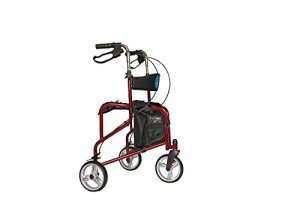outdoor-walker9956
outdoor-walker9956
3 Reasons 3 Reasons Why Your Senior Walker Is Broken (And How To Repair It)
A Comprehensive Guide to Senior Walkers: Enhancing Mobility and Independence
As individuals age, keeping mobility ends up being crucial for preserving independence and quality of life. For numerous seniors, walking aids such as walkers offer a valued solution to help them browse their environment safely and with confidence. This short article explores the diverse world of senior walkers, including their types, benefits, use, and some regularly asked concerns.

Understanding Senior Walkers
Walkers, typically described as walking frames, are mobility aids designed to offer assistance and balance for individuals who might have difficulty walking individually. They usually consist of a sturdy frame, grips for holding, and in some cases, wheels for ease of movement. Understanding the different types of walkers readily available can assist seniors and their caregivers make educated decisions.
Types of Senior Walkers
| Walker Type | Description | Best For |
|---|---|---|
| Requirement Walker | A four-legged frame that should be raised to move forward. | Seniors needing maximum stability. |
| Two-Wheeled Walker | A walker with two wheels on the front for simpler mobility. | Those with minor balance problems. |
| Four-Wheeled Walker | A walker with 4 wheels, frequently consists of a seat and brakes. | Active seniors needing mobility and pause. |
| Rollator Walker | A kind of four-wheeled walker that is lightweight and foldable. | Seniors who are more active and need small support. |
| Platform Walker | A specialized walker with a platform for support, typically utilized in physical treatment. | People requiring specific assistance for injuries. |
Benefits of Using Senior Walkers
Senior walkers supply many benefits that substantially improve the mobility and independence of elderly people. Here are a few of the most notable benefits:
- Increased Stability: Provides a strong base of support, decreasing the danger of falls.
- Enhanced Confidence: Encourages motion and can relieve anxiety about walking.
- Enhanced Posture: Helps maintain an upright posture while walking.
- Social Engagement: Facilitates participation in social activities by enabling mobility.
- Restorative Use: Can be utilized during rehabilitation to improve strength and balance.
Selecting the Right Walker
When picking a walker, different aspects need to be considered to make sure the very best fit. Below are bottom lines seniors or caregivers must assess:
- Weight Capacity: Ensure the walker can support the user’s weight.
- Height Adjustability: A correct height change is vital for convenience and effectiveness.
- Mobility Needs: Consider the user’s particular requirements, such as level of stability required.
- Lifestyle Factors: Think about where the walker will be used and how often.
Proper Use of Walkers
To optimize the benefits and minimize threats related to walkers, proper usage methods are necessary. Here are steps seniors need to follow:
- Stand in the Walker: Position the walker in front of them, ensuring it is stable.
- Grip the Handles: Hold the manages securely, ensuring a comfortable grip.
- Stroll Inside the Frame: Move forward by taking little actions, making sure the front legs of the walker remain on the ground.
- Turn with Care: To alter instructions, pivot on the feet while moving the walker.
- Use Cautiously: Avoid rushing and remember to take breaks when tired.
Regularly Asked Questions (FAQs)
What is the average rate of a senior walker?
The rate of senior walkers can vary based upon features and materials utilized. Requirement walkers might cost as low as ₤ 30, while innovative models with wheels and seats might range from ₤ 50 to ₤ 150.
How do I determine if my loved one needs a walker?
Signs that a senior may need a walker can include regular stumbling or losing balance, a current surgical treatment or injury affecting mobility, and preventing Walking Frame [mybusinesscardinuae.online] or taking part in social activities.
Can a walker assist with rehabilitation workouts?
Yes, walkers can be a crucial part of physical therapy, helping seniors restore strength and agility through safe motion.
Where can I buy a senior walker?
Walkers can be bought at medical supply stores, drug stores, or online merchants. Some insurance plans may even cover part of the cost.
How do I maintain a senior walker?
Routine maintenance involves looking for loose parts, ensuring brakes function correctly, and cleaning up the frame to prevent rust or wear.

Senior walkers are an indispensable resource for maintaining mobility and self-reliance as one ages. With different kinds of walkers offered, it is essential for seniors and caretakers to consider personal requirements, usage, and comfort when selecting a suitable walking aid. By encouraging safe mobility, walkers not just improve physical capabilities but also favorably impact social connections and mental health and wellbeing.
Through proper usage and care, seniors can enjoy an active, interesting way of life, reinforced by the support of their walker. Comprehending the importance of mobility aids like walkers is essential in promoting boosted life quality for seniors dealing with mobility difficulties.



